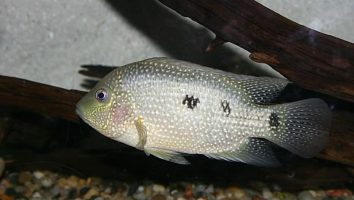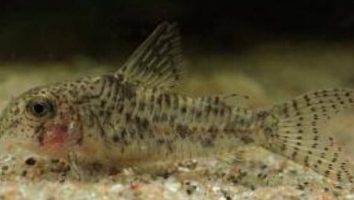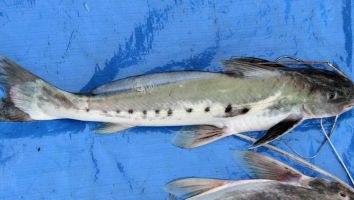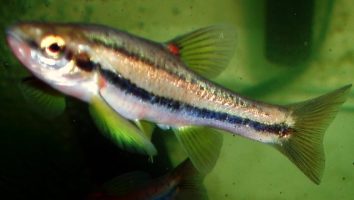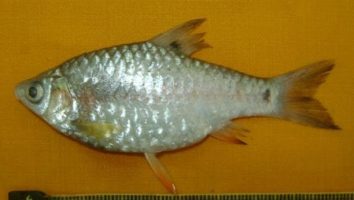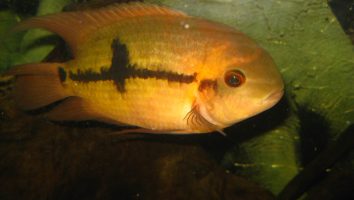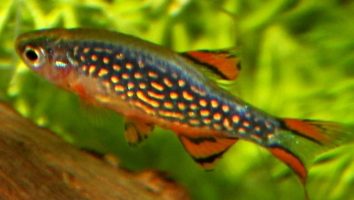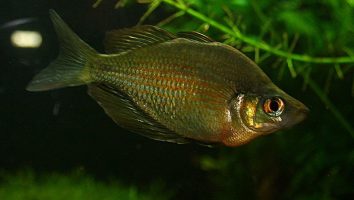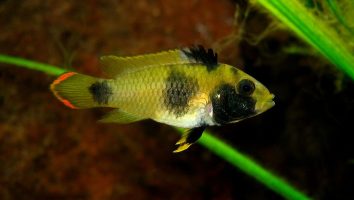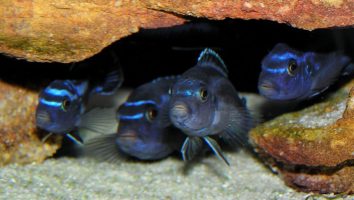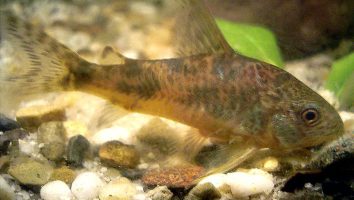The Florida gar is a large, impressive freshwater fish that is native to, you guessed it, Florida.
This fish can grow to be over 4 feet long and is covered in large scales. They’re also known to be good jumpers, so a tight-fitting lid is a must.
But don’t let their size or appearance intimidate you. Florida gars are actually quite peaceful and make great additions to a community tank.
In this guide, the Fish Academia team will teach you everything you need to know about Florida gar care. Diet, tank mates, size, and more.
Table of contents
Species overview
The Florida Gar (Lepisosteus platyrhinus) is a fish that is found primarily in the southeastern United States, particularly in the state of Florida (giving it its name).
They prefer slow-moving waters with a lot of vegetation, such as swamps, canals, and ponds. This is likely due to the fact that their primary food source is fish that live in these types of habitats.
Florida Gars are some of the largest freshwater fish in the US, with some individuals reaching lengths of up to 6 feet! They are also one of the longest-lived freshwater fish, with some individuals living for over 20 years.
Due to their size and lifespan, Florida Gars are not recommended for most home aquariums. However, they can be found in many public aquariums and zoos across the country.
Appearance
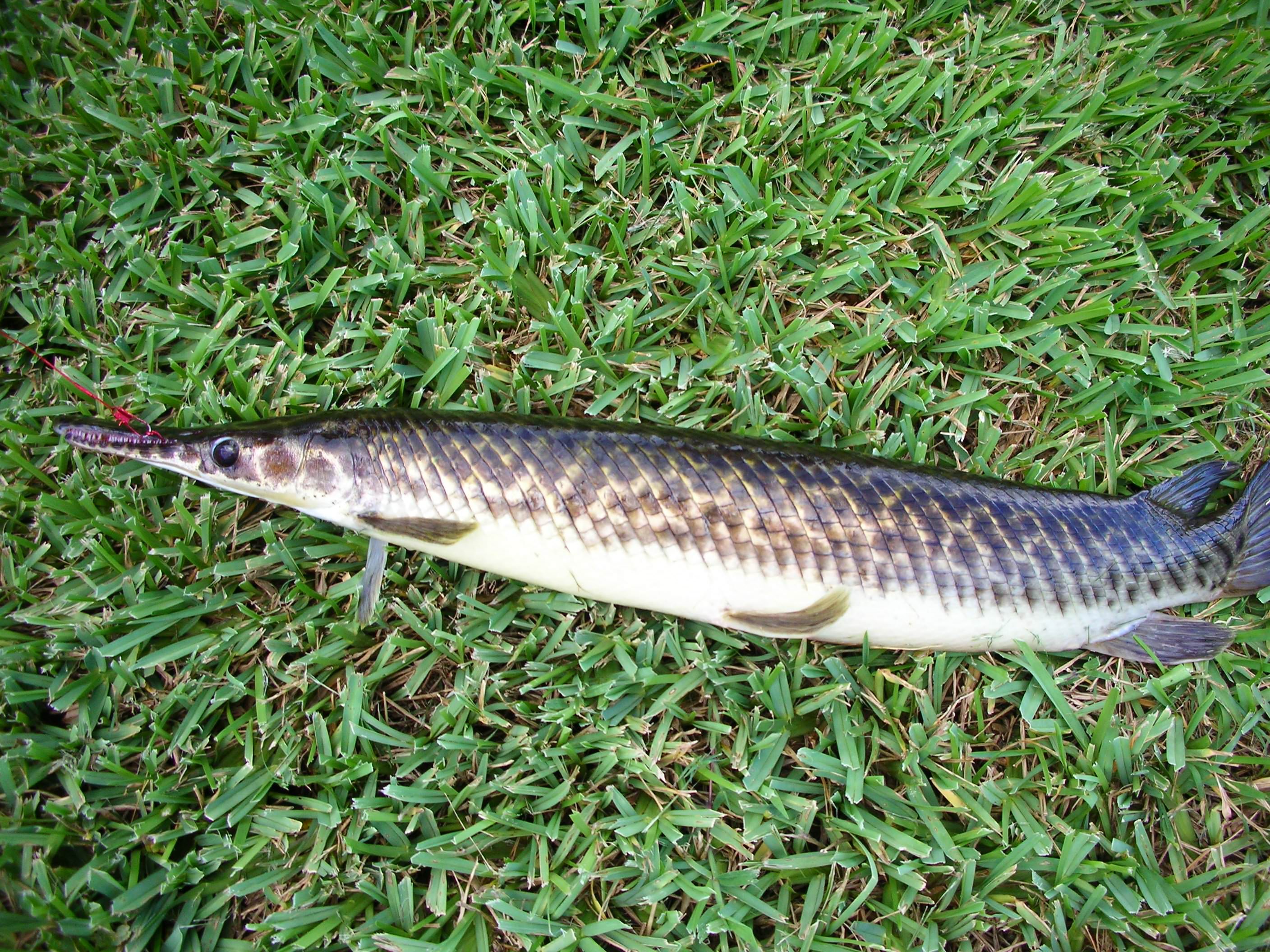
The Florida Gar is an incredibly unique-looking fish that is sure to stand out in your aquarium.
The first thing you’ll notice about this fish is their long and slender body. They have a very hydrodynamic shape that tapers off at the tail.
The majority of their body is covered in large scales. These scales have a very tough texture and help to protect the fish from predators.
The coloration of the Florida Gar is usually a olive green on the top half and a white on the bottom half. There are also some dark spots that are distributed evenly throughout their body.
The fins on this fish are also quite unique. The dorsal fin is long and runs the entire length of their body. The anal fin is much shorter and is located towards the back of the fish.
The pectoral fins are located towards the front of the fish and are used for steering. The caudal fin is forked and helps the fish to swim quickly.
The mouth of the Florida Gar is located on the bottom of their head. This is because they are bottom-dwelling fish. The mouth is filled with sharp teeth that are used to capture prey.
Lifespan
The average lifespan of a Florida Gar is around 10 to 15 years. But there have been reports of these fish living for up to 20 years in captivity.
As with most fish, their lifespan will be impacted by the quality of care they receive. Things like water quality, diet, and stress can all shorten their lifespan.
Size
The average Florida Gar size is around 3 feet, but they can grow to be as long as 6 feet! These fish are some of the largest freshwater fish in North America and can weigh up to 60 pounds.
Tank
Tank Size
The recommended minimum tank size for Florida Gar is 120 gallons. If you’re looking for a smaller freshwater fish, this is not the fish for you.
You will also need to make sure your tank has a strong filter and good aeration. This fish is a messy eater and produces a lot of waste. A good filter is a must to keep the water quality high.
Water Parameters
The Florida gar is a freshwater fish that is found in rivers and lakes in the southeastern United States. They prefer slow-moving waters with plenty of vegetation.
The water parameters you need to maintain for Florida gars are as follows:
- Water temperature: 70 to 80 degrees Fahrenheit
- pH levels: 6.0 to 8.0
- Water hardness: 2 to 12 dGH
- Alkalinity Levels: 4-8 dKH
What To Put In Their Tank
When it comes to setting up the inside of an aquarium for Florida Gar you can be as creative as you want. There aren’t any specific things that this species NEEDS to have, which gives you plenty of options.
We recommend some of the standard decorations that you find in a lot of freshwater tanks. There are a ton of great plants you can include (like hornwort or water wisteria). You can even throw in some floating aquarium plants too!
Rocks, driftwood, and caves are all suitable as well. It’s important to avoid going overboard with this since these fish like some room to swim.
Also, if you’re keeping your Florida Gar in a smaller tank then it’s going to be difficult to include a lot of this stuff anyway.
A classic gravel substrate is always a good choice, but you can do with something soft and sandy if needed too (use other species you keep as a guide with this).
Common Diseases
The Florida Gar is a hardy fish that can withstand a lot of different water conditions. However, they are still susceptible to illness and disease just like any other fish.
The most common disease that affects this species is parasites. These can be internal or external, and both can cause a lot of problems for your fish.
The most obvious sign that your fish has parasites is if you see them scratching themselves on objects in the tank. This is usually a sign of external parasites, and can be treated with a variety of different methods.
Internal parasites are a bit more tricky to spot, but some signs to look out for include a loss of appetite, lethargy, and weight loss.
If you think your Florida Gar has parasites, the best course of action is to take them to a vet or experienced fish keeper for a diagnosis. From there, you can treat them with the appropriate medication.
Another thing to keep an eye out for is fungal infections. These are usually caused by poor water quality, and can be treated with a variety of different methods.
If you think your Florida Gar has a fungal infection, the best course of action is to take them to a vet or experienced fish keeper for a diagnosis. From there, you can treat them with the appropriate medication.
Behavior & Temperament
The Florida Gar is a predatory fish, which means it’s not the best choice if you’re looking for a peaceful community tank inhabitant. It’s known to be aggressive towards smaller fish and can even eat fish that are half its size.
While they’re not the most cuddly creatures, they are interesting to watch. They’re fast swimmers and are constantly on the move. They’re also known to be good jumpers, so make sure you have a lid on your tank!
In the wild, Florida Gar are solitary fish. They only come together to mate. In captivity, they can be kept in groups, but it’s best to only keep one per tank. If you do choose to keep more than one, make sure the tank is large enough and there are plenty of hiding places.
These fish are also known to be escape artists. They can squeeze through tight spaces and are known to jump out of open tanks. So, if you decide to keep one, be sure to keep a close eye on it.
Tank Mates
When it comes to Florida Gar tank mates, there are a few things to consider.
First, these fish are large. They can easily reach sizes of 3 feet or more in the wild. That said, they’re not overly aggressive.
The main thing you need to worry about is finding species that can handle being in close proximity to a large predator.
Secondly, Florida Gar like to occupy the middle to top of the water column. This means that their tank mates need to be comfortable staying near the bottom.
Third, these fish come from warm waters. As a result, their tank mates should be able to tolerate similar water conditions.
Some compatible Florida Gar tank mates include:
- Green Sunfish
- Largemouth Bass
- Channel Catfish
- Brown Bullhead Catfish
- Bluegill
- Pumpkinseed
- Redbreast Sunfish
- Longear Sunfish
Breeding
Florida Gar are pretty easy to breed in captivity. They reach maturity around 3 years of age and can live to be over 20 years old.
To breed them, you’ll need a large tank. A 55-gallon tank is a good size, but you may need something even larger depending on the number of fish you have.
The water should be clean and well-oxygenated. A good filtration system is a must. The temperature should be between 70 and 75 degrees Fahrenheit.
Plants are not necessary, but you can add them if you want. Just make sure that they’re tough and can withstand the Gar’s roughness.
When you’re ready to breed, add 1 female for every 2 males. The female will lay her eggs in a nest that the male has built. He will then guard the eggs and keep them clean.
After about 2 weeks, the eggs will hatch. The fry will be very small, so you’ll need to feed them live food. Baby brine shrimp are a good option.
As they grow, you can gradually add larger food items to their diet.
Conclusion
The Florida Gar is a truly unique fish that is sure to add some excitement to your aquarium. They are relatively easy to care for as long as you provide them with the proper environment and diet.
However, they can grow to be quite large, so make sure you have the space to accommodate them.
Overall, we think the Florida Gar is a great option for experienced fishkeepers who are looking for something a little different.

